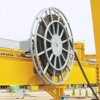- Joined
- 27 Jan 2008
- Messages
- 25,081
- Reaction score
- 2,915
- Location
- Llanfair Caereinion, Nr Welshpool
- Country

 They do not look like shuttered cables to me?
They do not look like shuttered cables to me?  neither does that, both clearly intended for domestic use, one for EV charging and the other for narrow boats and caravans, and I know I would run out a cable for my caravan which the regulations say should be "a flexible cord or cable of 25 m (±2 m) length, harmonized code designation HOSRN-F (BS 7919) or equivalent," so at least 23 meters long, and it remained connected to keep battery charged for around 48 weeks of the year and only removed when I went on holiday, it was not 23 meters long, it was only just long enough, which is why I did not take it on holiday with us.
neither does that, both clearly intended for domestic use, one for EV charging and the other for narrow boats and caravans, and I know I would run out a cable for my caravan which the regulations say should be "a flexible cord or cable of 25 m (±2 m) length, harmonized code designation HOSRN-F (BS 7919) or equivalent," so at least 23 meters long, and it remained connected to keep battery charged for around 48 weeks of the year and only removed when I went on holiday, it was not 23 meters long, it was only just long enough, which is why I did not take it on holiday with us.I will admit having cables outside for an extended time does present some danger, and this will vary depending on what it feeds. To get around the law in Wales, it was also the case in England at one time, we got products like this.
It will be noted only the cable to be buried is "Metal sheathed armoured cable" the rest is rubber.Blagdon Armoured supply consist of:
* 5 metres of rubber cable (pre-wired to plug and socket)
* Plug and socket armoured cable to rubber cable adaptor. (pre-wired x 2)
* Plug and socket adaptor brackets. (with fittings x 2)
* Metal sheathed armoured cable (5/10/15/20 metres depending on the model purchased)
* Armoured cable buried warning tape (5/10/15/20 metres depending on the model purchased)
* 50cm of rubber cable (pre-wired to plug and socket)
There have been debates on cable colour, blue is used to designate 230 volt, but orange is far easier to see in the grass, also using the 2.5 mm² cable at 25 meters long one could not wind it onto a drum, I tried ready made cable tidy
 cranes and concrete pumps used between 150 mm² and 240 mm² cables which were not SWA, but just large version of an extension lead, however the cranes were in the main running a set route, and there was limited access where it ran, and we did have problems with concrete pumps and the use of flex in UK, the same for welding sets which were often supplied with flex supply cables and on some sites these needed changing to a braid cable to satisfy the heath and safety people.
cranes and concrete pumps used between 150 mm² and 240 mm² cables which were not SWA, but just large version of an extension lead, however the cranes were in the main running a set route, and there was limited access where it ran, and we did have problems with concrete pumps and the use of flex in UK, the same for welding sets which were often supplied with flex supply cables and on some sites these needed changing to a braid cable to satisfy the heath and safety people.I would use Arctic myself as can be a bright colour, but either would do in England, Wales the garden is a special location and either pre-made installation like the Blagdon or needs LABC notification, not that I would bother.


